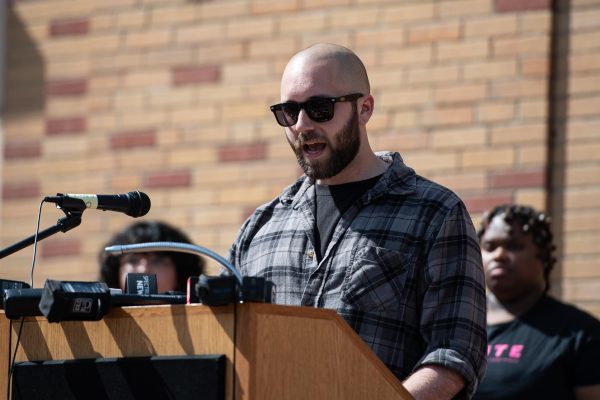Deterring drinking and driving
September 12, 2005
Kent’s first and last DUI Checkpoint of ’05 appears Friday night
More than 1,300 cars went through a driving under the influence checkpoint on East Main Street Friday night, and eight people were charged with operating a vehicle under the influence.
Police made a total of 19 arrests at the DUI Checkpoint, which was held in front of the AutoZone store from 10 p.m. until 3 a.m., said Sergeant Jayme Cole of the Kent Police Department. Other charges included underage drinking.
Of the eight drivers charged with driving under the influence, only two were 21 or older, and all tested over the legal limit for blood-alcohol content, cole said.
While the checkpoints are a delay to many law-abiding citizens, they do serve as deterrent to drunk driving, he said.
“We want to demonstrate our position that we’re out there, and we’re looking,” Cole said. “We want to take those drivers off the road if they are drinking and driving.”
If an officer could see some visible sign of intoxication when a driver was stopped, police asked the driver to pull into a diversion lane for further investigation.
Police diverted 91 cars, Cole said, but a vast majority of such drivers simply didn’t have their driver’s license on them.
If cars attempted to evade the checkpoint by turning around or charging through, officers in observation positions would pursue, Cole said.
“We try to prevent the turn-offs as much as we can, but they do happen,” he said.
Two drivers acted to avoid Friday night’s checkpoint by turning around in a parking lot and crashing through a barricade police set up in a driveway behind the BP gas station. Both drivers evaded police.
Another driver tried to rush through the checkpoint, but was stopped as he charged through the line, Cole said.
Although this was the city’s first checkpoint of the year, the law enforcement officers typically do two to three each year throughout the county, Cole said.
Task forces were created in eight high-risk counties: Cuyahoga, Franklin, Hamilton, Montgomery, Lucas, Butler, Trumbull and Portage. This year, task forces have been added in Mahoning, Summit and Stark counties.
Cole said the reasoning behind waiting until the fall is to serve as a deterrent to university students.
“We’re not targeting college students (but) they are a high-risk demographic (16-35 years),” Cole said.
Kent resident Carl Capellas, 30, agrees with Cole about college students being susceptible to drinking and driving.
“A DUI checkpoint will probably deter some students from drinking and driving,” Capellas said.
“We just want to get the word out to get a designated driver, make use of the campus bus service or just walk if you’re going to drink,” said Cole. “We encourage you to act responsibly anytime alcohol is involved.”
Junior Sean Brady, 21, said he thinks the checkpoint is necessary.
“Most people know someone who has been hurt by a drunk driver,” he said. “Drinking and driving causes tragedies.”
Still, Colonel Paul McClellen, the co-chairman of the task force, said although publicized checkpoints raise awareness about impaired driving, they aren’t the best method for arresting drunk drivers. Because these checkpoints are common knowledge, typically impaired drivers are discouraged, at least on the night of the said checkpoint.
Nevertheless, State Highway Patrol-sponsored checkpoints staffed 96 checkpoints from 2001 to 2003, stopping over 75,000 drivers and averaging more than five arrests per checkpoint.
Contact public affairs reporter Ryan Loew at [email protected] and public affairs reporter Audrey Wagstaff at [email protected].























